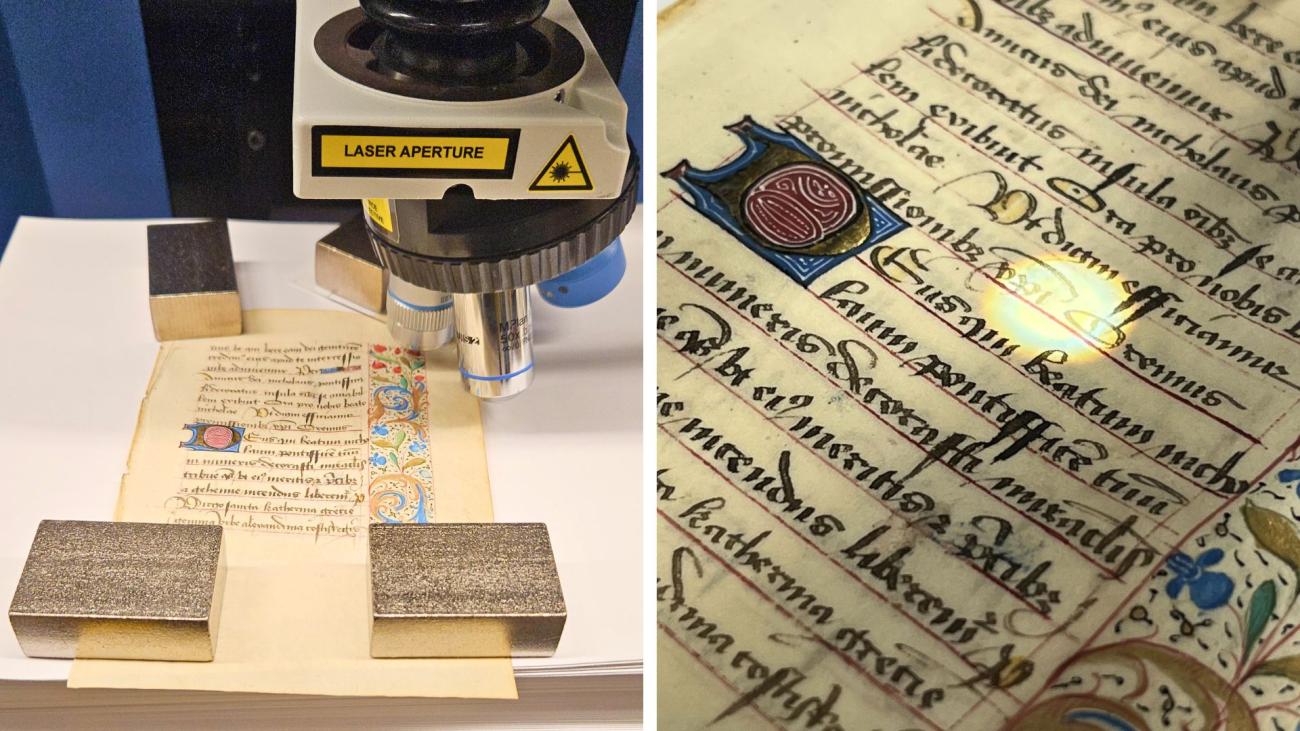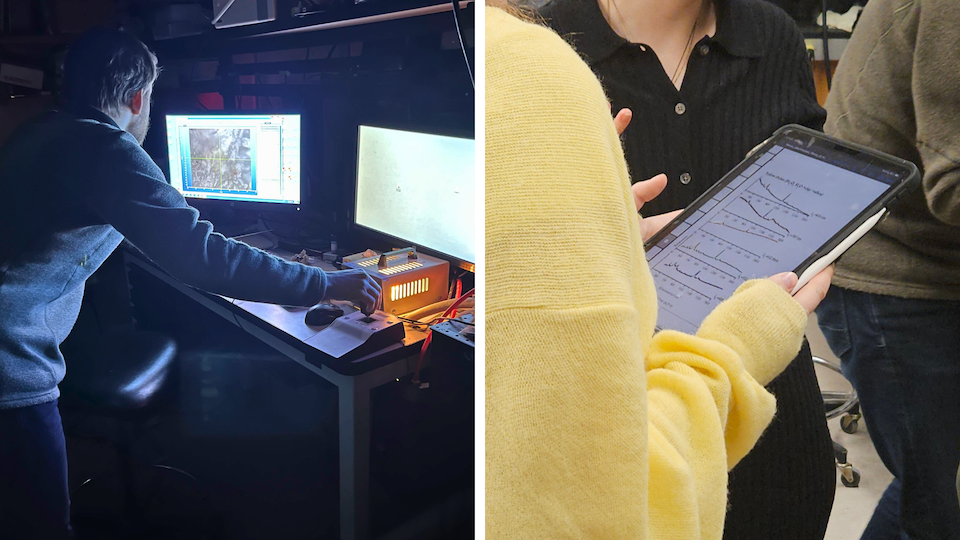Though this approach is new for analyzing illuminated manuscript pigments here at Dartmouth, there are many precedents for this sort of non-invasive experiment. Almost a decade ago, the University of Durham, a fellow member of the Matariki Network, conducted a large-scale project using Raman spectroscopy and then presented their findings.
Morgan Swan, Special Collections Librarian for Teaching and Scholarly Engagement, is thrilled by this project: “Cutting-edge research and discovery have been fueled by close collaboration between the sciences and the humanities since at least the beginning of the Scientific Revolution in the 1500s. This project is such a cool example of this dynamic in action, and I love that students will be amplifying Dartmouth’s impact across the scholarly ecosystem even while they are unlocking their own individual potential by practicing advanced research skills.”
Chris shares that though the Instrument Core Facility primarily serves the Chemistry Department, “we have students from Thayer and Geisel who use our facility regularly, and we welcome users from across Dartmouth who wish to use our instruments to analyze samples.”
We couldn’t be more curious and excited about coupling scientific techniques such as Raman spectroscopy with the humanities in innovative ways, and what results for researchers and their scholarship. With Jenny's spring term class (and her work with a French Book of Hours) intending to use this technology, we imagine there will be much to discover!


